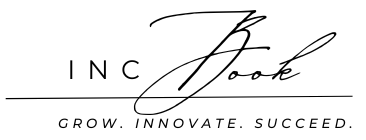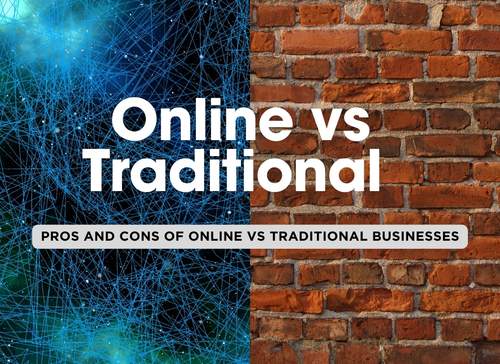Starting a business these days presents a big decision: should you go online or set up a physical store? Online businesses offer flexibility and lower startup costs, while brick-and-mortar stores provide that “real-world” experience customers can trust. Each has its unique perks and challenges, so let’s dive into what you can expect from both, covering everything from initial investment to customer reach and day-to-day operations.
| IncBook: Pros and Cons of Starting an Online Business vs. Brick-and-Mortar | ||
|---|---|---|
| Aspect | Online Business | Brick-and-Mortar |
| Startup Costs | Typically low. No need to rent or buy a physical space. Main expenses are website setup, hosting, and marketing. | High. You’ll need to rent or purchase space, invest in furnishings, signage, utilities, and potentially renovations. |
| Flexibility | High. Can operate from anywhere with an internet connection, with flexible hours and less staffing requirements. | Lower. Fixed location means needing to be open at set hours and possibly needing staff to handle operations. |
| Customer Reach | Wide reach. Can attract customers globally, 24/7. Perfect for scaling with minimal added cost. | Local reach. Primarily draws in nearby customers, with limited hours and higher costs to expand reach. |
| Customer Trust | Can be challenging to build trust online; relies on reviews, secure payment methods, and a strong online presence. | Usually high, as customers can physically see and interact with products and staff, building immediate trust. |
| Inventory Management | Easy to manage with drop-shipping or on-demand services, often requires less storage space. | Requires physical storage and regular inventory checks, along with handling physical goods and restocking. |
| Marketing and Visibility | Heavily digital: SEO, social media, and paid ads are essential. Easy to analyze and adjust marketing strategies. | Relies on local advertising, foot traffic, and word-of-mouth. Can be harder to track and refine marketing efforts. |
| Overhead Costs | Low overhead. No rent, fewer utilities, and fewer staffing needs unless scaling significantly. | High overhead. Rent, utilities, insurance, and payroll for in-store staff add up quickly. |
| Sales Process | Automated. Orders can be processed and fulfilled with minimal human interaction. Customer service is usually online. | In-person. Sales rely on customer interaction, which can improve customer experience but is labor-intensive. |
| Scalability | Highly scalable. Easy to expand into new markets or add products without significant costs. | Limited scalability. Expanding means opening new locations or renovating existing space, which is costly. |
| Personal Interaction | Limited. Mainly online customer service, which can lack a personal touch and may lead to miscommunications. | High. In-store staff can provide personal customer service and immediate assistance, improving customer loyalty. |
| Work-Life Balance | Flexible, as you can work from anywhere. However, online businesses often require constant monitoring. | More structured, with set store hours. However, being tied to a location may lead to longer workdays. |
Insider Tips for Starting an Online Business
- 🏠 Optimize Your Digital “Real Estate”
Treat your website like a storefront! Invest in a well-designed website with clear navigation, fast load times, and an easy checkout process. Your online business should feel as welcoming as a physical store, so don’t skimp on user experience. - 🌍 Capitalize on Global Markets
The beauty of an online business is the ability to reach anyone, anywhere. Consider offering international shipping early on and use platforms like Amazon or Etsy to expand your reach without major upfront costs. - 📈 Leverage Data Analytics
Track everything from website traffic to customer behavior using tools like Google Analytics. Data helps you understand what’s working, what’s not, and how to adjust quickly without wasting time or resources. - 🤖 Automate Customer Service
Use chatbots and automated emails to handle common customer inquiries, freeing you up for more strategic work. Automating customer service early can help keep customers happy and reduce operational load as you grow. - 💻 Embrace Content Marketing
Start a blog or YouTube channel to educate your audience and build trust. Quality content can drive organic traffic to your site, creating loyal customers without constantly spending on ads. - 🚚 Offer Free Shipping Strategically
If feasible, offer free shipping to incentivize purchases. Just make sure to build it into your pricing model to cover costs without cutting too deeply into profits. - 🔍 Master SEO (Search Engine Optimization)
Invest time in understanding SEO. Ranking high on Google for relevant keywords can be a game-changer, driving a steady stream of potential customers to your site without ongoing ad costs. - 📱 Be Mobile-Friendly
Mobile shopping is huge. Ensure your website is responsive and easy to navigate on a phone or tablet. A clunky mobile experience can turn potential buyers away instantly. - 💬 Engage with Social Media Influencers
Partner with influencers who align with your brand. A recommendation from the right influencer can build instant trust and lead to a surge in traffic and sales. - 💳 Offer Multiple Payment Options
Accept a variety of payment methods like credit cards, PayPal, and even “buy now, pay later” options if possible. More choices make it easier for customers to complete their purchases.
Insider Tips for Starting a Brick-and-Mortar Business
- 📍 Choose the Right Location
Location is everything! Pick a spot with plenty of foot traffic and a customer base that matches your target market. Don’t compromise on location even if rent is higher. - 🤝 Build Community Relationships
Get involved locally by joining the Chamber of Commerce or sponsoring community events. Face-to-face connections build loyalty and trust in ways that online stores can’t replicate. - 💡 Create an Inviting Ambiance
Make your store a place people enjoy spending time in. Good lighting, comfortable seating, and even a scent that matches your brand can make a huge difference in how customers perceive your space. - 🚀 Host Events or Workshops
Bring customers in by offering events, workshops, or product demonstrations. It’s a great way to engage with your audience and increase foot traffic. - 🎨 Show Off Your Products Creatively
Use eye-catching displays and create focal points in your store that attract attention. A well-organized store layout can drive sales by making products easy to find and browse. - 🧾 Track Inventory Closely
Implement an inventory management system to avoid overstocking or running out of popular items. In-store stock takes up space and costs money, so efficient management is key. - 👥 Train Staff for Exceptional Service
Knowledgeable, friendly staff make a big difference. Invest in staff training to ensure they can answer questions, offer advice, and create a positive experience for customers. - 📱 Collect Customer Emails In-Store
Start building a customer list by offering email sign-ups at checkout. Use this list for promotions, new product announcements, and loyalty rewards to keep customers coming back. - 🚪 Leverage Curb Appeal
Make the outside of your store as inviting as the inside. Use clear signage, keep windows clean, and display eye-catching products or decorations to draw people in. - 🎉 Reward Loyal Customers
Implement a loyalty program with exclusive perks or discounts for returning customers. Loyalty programs encourage repeat visits and help build a steady customer base.



